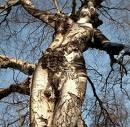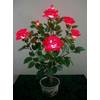Sandalwood







As per
the report of Map of India: The Mysore sandalwood is famous not only
in India but abroad also. The sandalwood forest of Mysore is located in the
southwestern part of India.
The sandalwood has been a great boon to the traders over the years. It is used
for many purposes like making incense, medicinal products, beautiful
handicrafts, soaps, etc. Even various cosmetic products and perfumes are made
out of it. Among others the talcum powder made out of sandalwood also is quite
popular for its fragrance. The people also use the oils made out of sandalwood
product widely. The fragrance is simply irresistible.
The Mysore sandalwood is known for its superb quality. The prices of the
sandalwood made stuffs are exorbitantly high because it is now been counted as
an endangered natural item. The trees are being felt in huge quantity because
of the high demand for it. This is leading to the fast extinction of these
trees.
The most famous sandalwood of Mysore is called the Byakudan sandalwood. This
kind of sandalwood has an excellent quality and the fragrance is unparalleled.
But the sandalwood of this kind is being exported by India only to companies
like Baieido in Japan.
The Mysore sandal soap is very popular among women. As it is free of harmful
chemicals, the soap helps to keep the skin soft. It is made from pure
sandalwood oil extracts. Also the sandalwood incense has a very high demand in
India. The paste of sandalwood is used to keep oneself free from various skin
ailments. Thousands of tourists from all over India visit Mysore every year and
they are very fond of the various handicrafts made out of sandalwood.
Karnataka
being an ideal place for sandalwood cultivation, its market share is 50% of
total production in India. (Refer ‘Sandal’ the book published by Indian Council
of Forestry Research and Education, Dehradun). Moreover, even a common man
knows the value of the product and its demand.
Eventhough we have Purchase Order from M/s J. Bapuji, in the course of
time in a long run, we like to promote the samplings grown in our Nursery in
each house for a meager amount and this will yield
the best
return for them in 20 years. Even
though Karnataka state’s contribution to Sandalwood production is 50% of the
total production in India, there is a substantial decline in the production as
per official statistics due to extensive smuggling and dwindling forest cover
(refer Page No.151 of the book “Sanda”).
Therefore, we like to bring out a scheme wherein we like to supply and
plant the sandalwood sampling in each house at a nominal cost thereby it: (1)
multiplies their small investment in a big way; (2) enables our state to
rebound back in their prestigious sandalwood business; and (3) creates a good
business for us also. In this way, we
like to promote our business with profitability for a good social cause. Please refer the Table-17 in the page no. 61
and Table No.45 in the Page No.152 of the above-mentioned book, viz
“sandal”. According to these tables, in
21 years 10 k.g of Sandalwood will be available and the cost of one tonne in
1990 itself (as per the book) was Rs.2 lacs.
As such, anybody’s investment of Rs.250 now will yield a minimum of Rs.1
lac without much efforts in 20 years.
Moreover, now that Karnataka Government has removed the previous
restrictions for growing sandalwood, any
body can now grow the plant in their house.
Note:-
All the pages and tables quoted above from the book ‘Sandal’ are Xeroxed and
enclosed herewith for your authentic information.
Bonsai




In fact, Bonsai
plants are very attractive and able to décor any house with their grace and beauty.
Bonsai plants are generally those plants that have small leaves, many branches
and roots that are grounded up. The cultivation of Bonsai plants is mainly
depends on the choice
of a
person. Bonsai
is miniature landscape in pots of different materials, sizes and shapes
featuring certain arrangement of flowers, trees and mountainous rocks. It is a
comprehensive plastic art combining garden cultivation, literature and painting
etc. Originated from China, Bonsai is a traditional Chinese art treasure with a
long history. It is popular among the
general public. Bonsai is
a product of cultivation technology and plastic art, as well as a combination
between natural beauty and artistic beauty. A bonsai work involves plants,
mountains, rocks, water and soil, plus the horticulturist's creative design,
formation and attentive care.